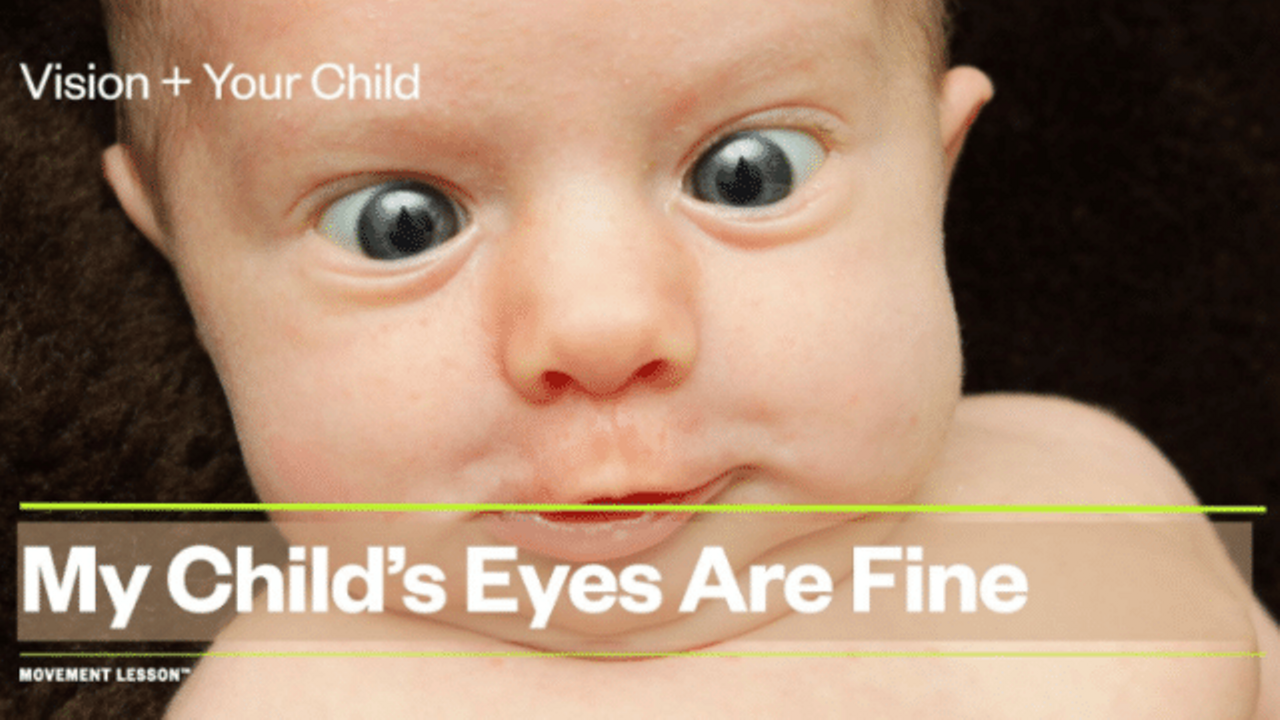Facts About Eyes and Vision - Vision and Development Correlelation

*This website is not intended to be a substitute for professional medical advice and should not be relied on as health or personal advice. Always seek the guidance of your doctor or other qualified health professional with any questions you may have regarding your health or a medical condition. Please see disclaimer for additional information about what we are not, click here.
Are the Eyes Fine?
We shouldn't worry about vision.
The eyes just see. It's that easy. Well, not so fast!
Not only should the eyes see - they need to complement every movement in your child's body.
The body's structure might be unable to respond to the toy or your voice = so the eyes to learn to be included with the conversation.
The eyes might be the best feature in your child's life, so they move into all sorts of positions, which might look like 'lack of head control' just to see you.
The one phrase you want to hear from your child's ophthalmology visit is your child's "eyes are fine."
However, just because the structure of your child's eyes are good, doesn't mean that they have the tools needed for successful vision.
There are three key areas to be evaluated for your child's ultimate vision:
#1 Environmental:

Your child's visual surrounding can be too cluttered or complex for them to have successful vision.
Like finding a needle in the haystack can be too much for them to have successful vision going from near to farsighted.
#2 Structural:

The eye is made up by several key features needed for the eyes to work.
They should be examined for damage introduced by birth trauma and genetics, optic nerve damage, premature retinopathy, astigmatism, to name a few.
During this time, the shape of the eye is examined for near and farsighted.
#3 Neurological:

The brain is wired to read the information the eyes have sent them.
A missing or damaged corpus colosseum to cortical visual intervention (CVI) can interfere with this process.
Vision and Movement go hand and hand.
Helping your child see better will improve their movement developmental responses.
The way your child is able to move and future possibilities and successes need to include visual maturity.
For a baby to go into their vertical milestones, their vision must learn to transition back and forth from near and far vision or nearsighted to farsighted.

This quality of vision is active and passive converging.
The eyes learn to work together (binocular vision) then go near and far with both eyes synchronizing, they converge and move or have convergence.
Every milestone matures the vision and all vision enhances milestones.
The inability to have transitional vision will limit all movements of the body.
Improve the vision and you can improve any and all movements in the body.
Understand and learn how to help understand all of this with our course Vision+Your Child and move on to the course made with your child's needs in mind. Click Here.
Eyes need and will coordinate every movement through the spine and pelvis

You hear me all the time:
- What is the visual diagnosis?
- May I see a video of your child's vision?
- Do you have a hip X-ray?
When there are deviations in a child's, or adult's, ability to move, this will reflect in their movements and milestone creation and inabilities throughout their body.
One of the easiest ways to help a child is through the vision because if you improve their vision, you improve their movement skills.
You do not achieve changes with core strength. You master anything in life, with ease of core movements.
Independence of visual functions stems from this key area of development.
Some of the milestones warnings:
-
Unable to come to sitting through lying on the back
-
Cannot transition in and out of all fours to sitting.
-
Inabilities to cross midline through the chest.
You learn this and more, how to help your child's vision and functional movement, in the Cognitive Vision Course. To get trained in Functional Vision and Treatment Techniques start the course here,
CLICK HERE

Weak Convergence
Does your child struggle with vision?
Did you know it shouldn't be work to see?
Your child's vision, at the age of 10.5 to 12 months of age, should be independent from their head functions.
When this doesn't happen, the first thing to evaluate is their binocular vision (do the eyes work together) and convergence (can they transition from far to near and near to far?)
Vestibular inefficiency can be due to a lack of depth perception and head and spine control.












